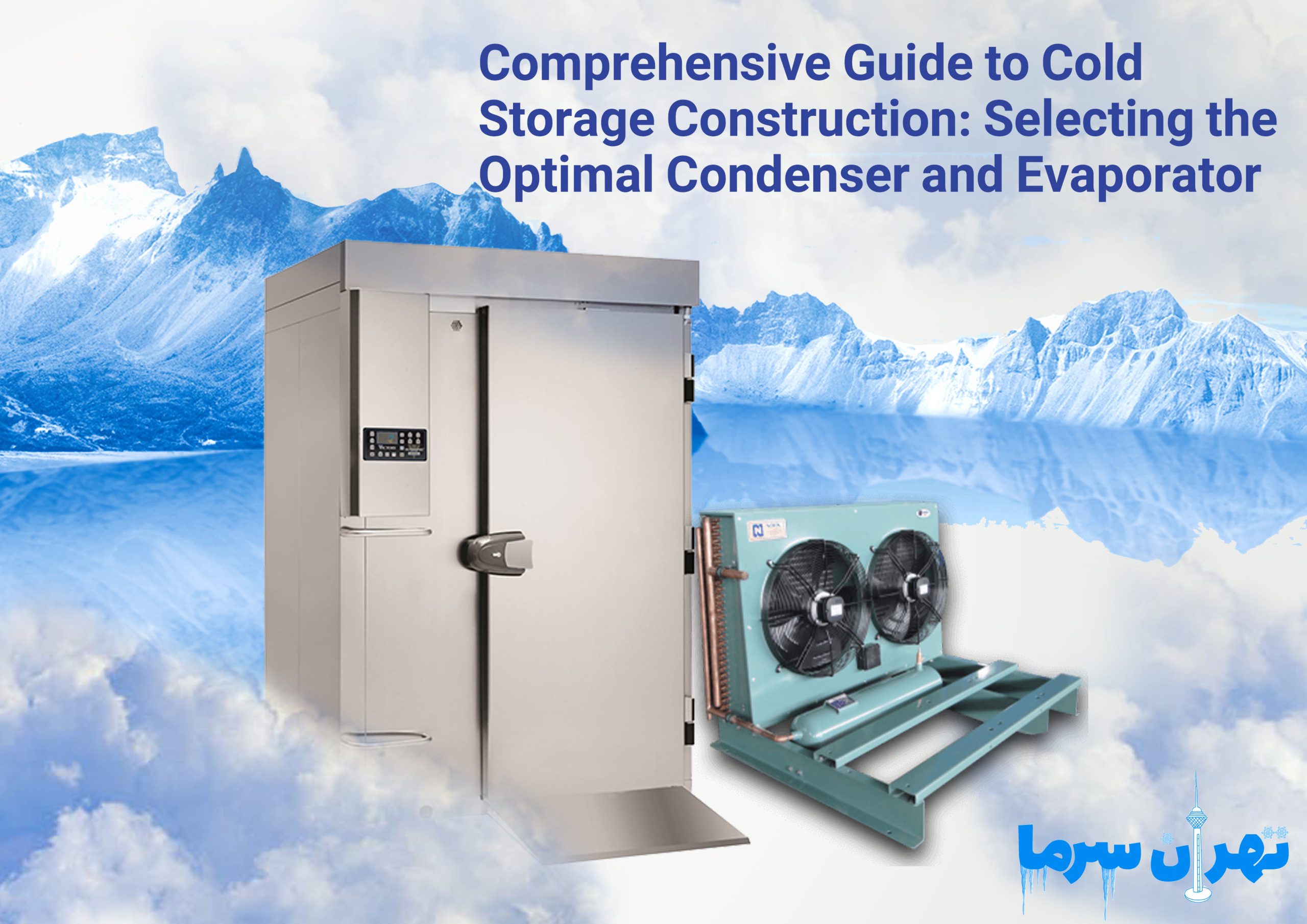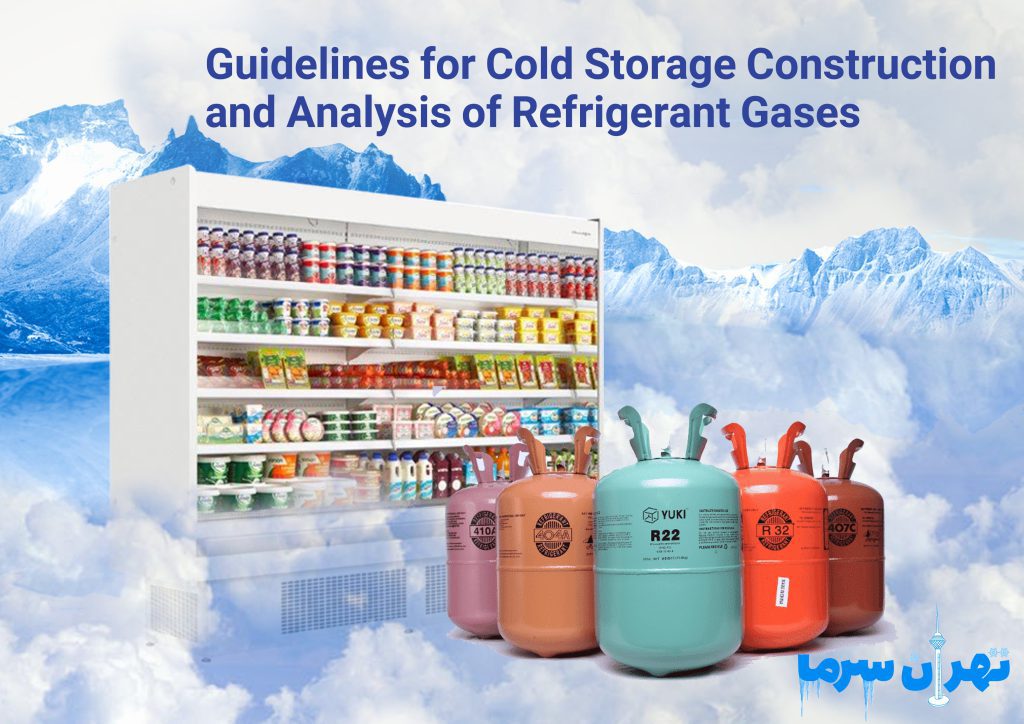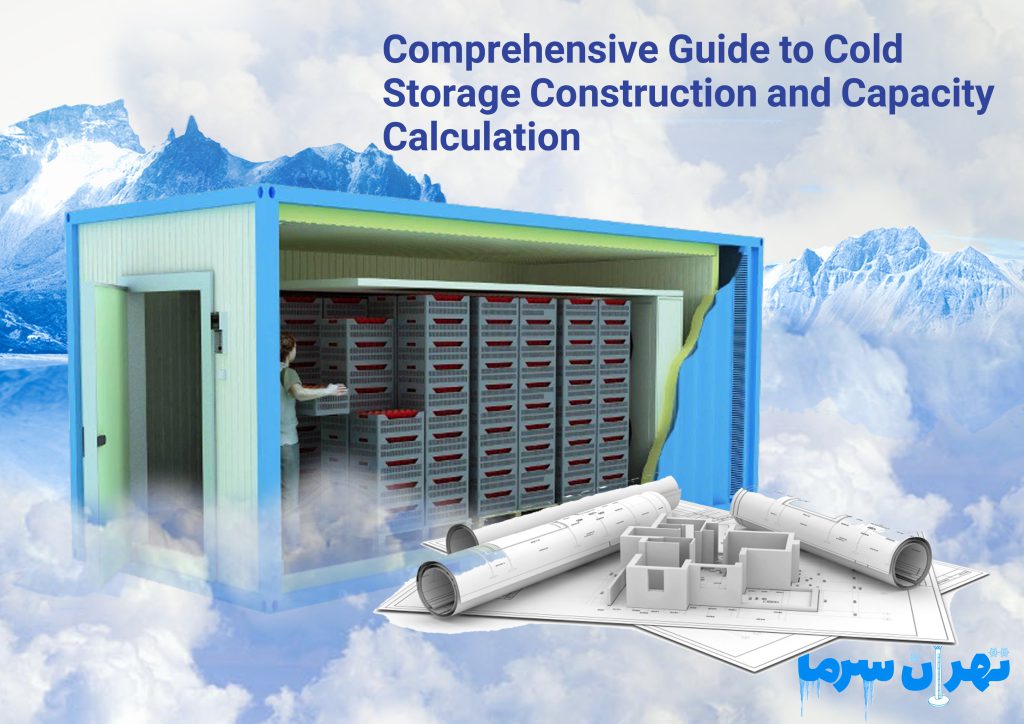Comprehensive Guide to Cold Storage Construction in Tehran: Choosing the Optimal Condenser and Evaporator

A comprehensive guide to cold storage construction provides complete information on the design process, required equipment, and construction costs. If you are looking to create a suitable space for storing food or pharmaceutical products, studying guidelines for cold storage construction will help you make the best decision. Particularly, if you plan to establish it in the capital, understanding local conditions and regulations in the Comprehensive Guide to Cold Storage Construction in Tehran can be highly beneficial.
Comprehensive Guide to Cold Storage Construction and the Importance of Choosing the Right Condenser
In Tehran, with its hot summers and relative air pollution, condensers must be selected to operate efficiently at high temperatures. Air-cooled condensers with a high heat exchange surface are often considered a suitable option because they minimize water consumption and do not require complex water supply and purification systems.
However, in certain applications, evaporative condensers are also considered, especially when higher efficiency is required, and high-quality water is available. On the other hand, water-cooled condensers connected to cooling towers are less commonly used in cold storage projects in Tehran due to limited access to stable water resources.
Guidelines for Cold Storage Construction and Selecting the Right Evaporator
Choosing the right evaporator is equally important since this component is responsible for absorbing heat from the internal environment and distributing cold air. The type and design of the evaporator should be determined based on the products stored in the cold storage facility. In facilities storing temperature-sensitive food products, evaporators with a broad heat exchange surface and precise airflow control capability are essential.
Improper selection of this component can lead to excessive frost buildup, increased energy consumption, and temperature fluctuations, ultimately affecting product quality.
Comprehensive Guide to Cold Storage Construction in Tehran and Refrigerant Selection
Another critical factor in choosing the condenser and evaporator is the type of refrigerant used in the system. The selection of a suitable refrigerant should be based on environmental considerations, energy efficiency, and legal requirements.
Modern cold storage facilities increasingly use environmentally friendly refrigerants with optimal pressure performance. Choosing the right refrigerant not only affects the performance of the condenser and evaporator but also impacts long-term maintenance costs and the overall efficiency of the system.
In addition to technical considerations, equipment maintenance should be planned from the outset. Using condensers with easy access for cleaning and evaporators designed to prevent excessive frost accumulation can significantly reduce maintenance costs and extend the system’s lifespan.
Furthermore, in cities like Tehran, where energy costs are rising, utilizing high-efficiency equipment and smart control systems for optimizing cold storage performance can significantly reduce operational expenses. This highlights the importance of studying the Comprehensive Guide to Cold Storage Construction.
Guidelines for Cold Storage Construction and Analysis of Different Refrigerant Gases
The construction of a cold storage facility generally begins with assessing storage needs. The required temperature for storing different products is a key factor in determining the specifications of the refrigeration system. For example, dairy products, fruits, and vegetables are stored at temperatures above zero degrees Celsius, whereas meat and frozen goods require temperatures below zero.
These temperature differences directly influence the selection of refrigeration equipment and refrigerant types. Additionally, factors such as humidity, airflow, and even the arrangement of stored goods inside the cold storage unit affect system design.
After defining the cooling requirements, the next step in the Comprehensive Guide to Cold Storage Construction is selecting refrigeration equipment, with refrigerant choice being one of the most crucial decisions. Refrigerants transfer heat from inside the cold storage unit to the external environment, and selecting the right type ensures system efficiency. Refrigerants vary in chemical composition and physical properties, each with its advantages and limitations.
Some refrigerants, such as ammonia, have exceptionally high thermal efficiency and minimal environmental impact. However, due to their toxicity and the need for advanced safety systems, they are primarily used in large industrial cold storage facilities. In contrast, more common refrigerants, such as hydrofluorocarbons (HFCs), offer good performance but require careful consideration of their environmental impact and global warming potential.
In recent years, due to environmental regulations and global policies aimed at reducing ozone-depleting gases, many refrigeration systems have shifted toward natural refrigerants like carbon dioxide (CO₂) and hydrocarbons. CO₂, with its favorable thermodynamic properties and zero impact on the ozone layer, has become a sustainable alternative for certain cold storage applications. Additionally, propane (R-290) and isobutane (R-600a) are gaining traction as environmentally safer options for smaller refrigeration systems.
The selection of an appropriate refrigerant should consider factors such as system operating pressure, energy efficiency, maintenance costs, and climatic conditions. In high-temperature regions, using refrigerants capable of maintaining efficiency under extreme environmental conditions is particularly important. Furthermore, safety considerations must be thoroughly examined, especially in cold storage facilities using flammable or toxic refrigerants.
Optimizing cold storage construction and selecting the right refrigerant are just parts of the overall design and implementation process. To maximize efficiency and reduce operational costs, advanced control systems and energy optimization strategies must also be considered.
Utilizing smart temperature and pressure control systems, precise superheat and subcooling adjustments, and optimizing insulation are among the measures that can enhance overall system performance.
Comprehensive Guide to Cold Storage Construction and Equipment Maintenance Management
In the process of cold storage construction, selecting refrigeration equipment is of utmost importance. Condensers, evaporators, compressors, and control valves each play a crucial role in maintaining the required temperature conditions. Therefore, during the design and installation phase, equipment selection should be based on required cooling capacity, environmental conditions, and refrigerant type.
Using high-quality, high-performance equipment reduces future maintenance costs. Additionally, proper system design and correct placement of equipment directly affect system efficiency and ease of maintenance.
After commissioning the cold storage unit, maintenance management becomes one of the biggest challenges for operators. An effective approach is implementing a preventive maintenance program, which includes periodic inspections, equipment cleaning, pressure and temperature monitoring, refrigerant level checks, and lubrication of moving parts.
Such measures allow potential issues to be identified before they escalate, preventing unexpected system shutdowns. Conversely, neglecting equipment maintenance can lead to increased energy consumption, reduced cooling efficiency, and costly failures.
One of the most critical aspects of maintenance is monitoring and inspecting the compressor, which acts as the heart of the refrigeration system, responsible for compressing and circulating the refrigerant. Poor compressor performance can increase system operating pressure, raise condenser temperatures, and reduce overall efficiency.
Thus, regular monitoring of suction and discharge pressures, oil lubrication, and refrigerant levels is essential. Additionally, liquid and suction line filters should be checked to prevent the accumulation of particles and contaminants in the circuit.
Alongside the compressor, the performance of the evaporator and condenser also plays a crucial role in the efficiency of cold storage. A dirty condenser loses its heat exchange capacity, increasing system pressure and reducing performance.
For this reason, regular cleaning of air-cooled condensers and monitoring water consumption in evaporative condensers are essential for optimal performance. For evaporators, monitoring fan performance, preventing excessive frost buildup, and properly managing the defrost cycle are key factors directly affecting cooling quality.
Another significant aspect of cold storage maintenance management is utilizing smart monitoring and control systems.
Modern temperature and pressure control systems enable real-time monitoring of equipment performance and send alerts to operators in case of abnormal conditions. These technologies not only reduce dependence on manual supervision but also improve accuracy in maintaining environmental conditions and help prevent failures.
Comprehensive Guide to Cold Storage Construction and Insulation Considerations
Proper insulation is one of the most critical stages in cold storage construction, directly impacting energy efficiency, temperature retention, and operational costs. Choosing insulation materials with low thermal conductivity, such as polyurethane or polystyrene panels, helps minimize heat loss and reduce cooling load.
The appropriate insulation thickness depends on the type of cold storage facility and its temperature range. For subzero cold storage units, thicker insulation is necessary. In addition to material selection, proper installation and sealing between panels are crucial, as even the smallest thermal leakage can increase energy consumption and reduce efficiency.
Best Comprehensive Guide to Cold Storage Construction with Tehran Sarma Engineering
Constructing a standard and efficient cold storage facility requires technical knowledge, experience, and selecting the right equipment. Tehran Sarma Engineering Company offers precise engineering solutions and is one of the most reputable options in this field.
For more information on cold storage construction costs, visit Tehran Sarma’s website or contact 09121906418 and 02177972256.




 سردخانه
سردخانه برق
برق کمپرسور
کمپرسور کمپرسور بیتزر
کمپرسور بیتزر کمپرسور کوپلند
کمپرسور کوپلند کمپرسور بوک
کمپرسور بوک کمپرسور دانفوس
کمپرسور دانفوس کمپرسور منیروپ دانفوس
کمپرسور منیروپ دانفوس کمپرسور امبراکو
کمپرسور امبراکو کمپرسور پاناسونیک
کمپرسور پاناسونیک کمپرسور سابکول
کمپرسور سابکول کمپرسور کوپلند
کمپرسور کوپلند کمپرسور اسکرال کوپلند
کمپرسور اسکرال کوپلند کمپرسورفراسکلد
کمپرسورفراسکلد کمپرسور رفکامپ
کمپرسور رفکامپ کمپرسور اسکرال دانفوس
کمپرسور اسکرال دانفوس گاز مبرد
گاز مبرد گاز R22
گاز R22 گاز R134
گاز R134 گاز R404
گاز R404 گاز R407
گاز R407 گاز R410
گاز R410 گاز R508
گاز R508 کندانسور هوایی
کندانسور هوایی اواپراتور
اواپراتور اواپراتور آرشه
اواپراتور آرشه اواپراتور صابکول
اواپراتور صابکول اواپراتور آسه
اواپراتور آسه اواپراتور نیک
اواپراتور نیک اواپراتور آرتک
اواپراتور آرتک اواپراتور نوین
اواپراتور نوین اواپراتور تبادل کار
اواپراتور تبادل کار درب
درب ساندویچ پنل
ساندویچ پنل فن سردخانه
فن سردخانه روغن کمپرسور سانیسو
روغن کمپرسور سانیسو متعلقات سردخانه
متعلقات سردخانه